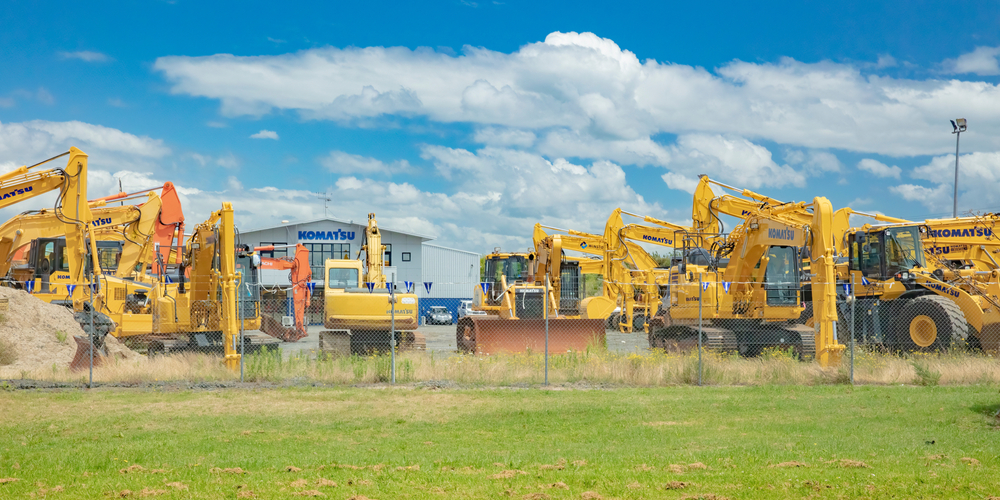Hydraulic systems are the lifeblood of heavy machinery, powering everything from excavators to cranes. The efficiency and reliability of these systems are paramount to the success of construction projects, and any malfunction can lead to significant downtime and financial loss.
Among the potential issues, hydraulic fuel leaks are particularly concerning due to their potential to cause severe damage and safety hazards.
Detecting and managing a hydraulic fuel leak is crucial for maintaining equipment performance and ensuring the safety of operators and the environment.
How Hydraulic Systems Work
Hydraulic systems are integral to the operation of heavy machinery, providing the force necessary to lift, move, and manipulate heavy loads.
These systems operate based on Pascal’s principle, which states that pressure applied to a confined fluid is transmitted equally in all directions.
This principle allows hydraulic systems to amplify force, making it possible for heavy machinery to perform tasks that would otherwise be impossible.
Key components of a hydraulic system include:
Hydraulic Fluid
The medium that transmits power within the system. This fluid must be free of contaminants to ensure efficient operation. It also serves as a lubricant for moving parts and a coolant to dissipate heat generated during operation.
Hoses
Flexible conduits that carry the fluid between components. These hoses must be durable and able to withstand high pressures and environmental conditions. They are typically reinforced with layers of braided steel or synthetic materials to prevent rupture.
Pumps
Devices that pressurize the fluid, enabling it to do work. There are various types of pumps, including gear, vane, and piston pumps, each suited to different applications based on their pressure capacities and efficiency.
Cylinders
Actuators that convert fluid pressure into linear motion. Hydraulic cylinders are used to perform tasks such as lifting, pushing, and pulling. They consist of a cylinder barrel, a piston, and a piston rod.
The proper functioning of these components is essential for the smooth operation of heavy machinery. Regular maintenance and monitoring are crucial to ensure that hydraulic systems remain in optimal condition, minimizing the risk of breakdowns and costly repairs.
Causes and Symptoms of Hydraulic Fuel Leaks
Hydraulic fuel leaks can be caused by a variety of factors, including:
Damaged Hoses
Wear and tear, abrasion, or accidental punctures can lead to hose failure. Hoses are often subjected to harsh environmental conditions and physical stress, making them susceptible to damage over time.
Faulty Seals
Over time, seals can degrade, leading to leaks at connection points. Seals are made from materials like rubber or polyurethane, which can wear out due to friction, heat, and chemical exposure.
Loose Fittings
Vibration and movement can cause fittings to loosen, resulting in leaks. Fittings connect different components of the hydraulic system and must be securely tightened to prevent fluid escape.
Symptoms indicating a hydraulic fuel leak include:
- Fluid Puddles: Visible pooling of hydraulic fluid under the machine. This is a clear indication of a leak and should be addressed immediately to prevent further damage.
- Decreased Performance: Reduced efficiency or slower operation of hydraulic functions. This can be caused by a drop in hydraulic pressure due to a leak.
- Unusual Noises: Hissing or squealing sounds indicating escaping fluid or air within the system. These noises can signal that fluid is leaking from a pressurized component.
Detection and Diagnosis
Detecting hydraulic fuel leaks involves several steps:
Visual Inspections
Regularly checking hoses, fittings, and seals for signs of wear or damage. This involves examining the entire hydraulic system for cracks, bulges, or other visible defects.
Fluid Level Checks
Monitoring hydraulic fluid levels to identify unexpected drops. A sudden decrease in fluid level can indicate a leak somewhere in the system.
Pressure Tests
Using diagnostic tools to measure system pressure and identify leaks. Pressure gauges and flow meters can help pinpoint areas where pressure loss is occurring.
Diagnosing the source and extent of a leak is essential for effective repair planning. This may involve isolating sections of the hydraulic system and using specialized equipment to pinpoint the leak location.
Techniques such as dye testing, where a fluorescent dye is added to the hydraulic fluid, can also help identify the exact source of a leak under ultraviolet light.
Prevention and Maintenance
Preventive measures can significantly reduce the risk of hydraulic fuel leaks:
Regular Inspections
Conducting routine checks of hoses, seals, and fittings to identify and address potential issues early. This proactive approach can prevent minor problems from escalating into major failures.
Proper Fluid Selection
Using the recommended hydraulic fluid to ensure compatibility and optimal performance. Different hydraulic systems require specific types of fluids with particular properties, such as viscosity and thermal stability.
Maintenance Schedules
Adhering to manufacturer-recommended maintenance intervals for fluid changes, filter replacements, and system inspections. Keeping up with these schedules ensures that all components function correctly and reduces the likelihood of leaks.
Maintenance tips for maintaining hydraulic systems in optimal condition include:
Keeping Hoses Clean
Preventing contamination by regularly cleaning hydraulic hoses and components. Dirt and debris can cause abrasion and wear, leading to leaks.
Checking for Wear
Replacing worn or damaged parts before they fail. Regularly inspecting and maintaining components can extend the life of the hydraulic system.
Monitoring System Performance
Keeping an eye on hydraulic system performance metrics to detect and address deviations from normal operation. Performance monitoring can help identify issues before they result in leaks or system failures.
Managing Hydraulic Fuel Leaks
Effective management of hydraulic fuel leaks involves:
Containment Procedures
Implementing measures to contain the leak and prevent further spillage. This can include using absorbent pads or barriers to stop the spread of leaked fluid.
Fluid Cleanup
Properly cleaning up spilled hydraulic fluid to avoid environmental contamination. Spilled fluid can be harmful to the environment, and proper cleanup is essential to minimize its impact.
Repair/Replacement of Damaged Components
Replacing or repairing damaged hoses, seals, and fittings to restore system integrity. Ensuring that all repairs are done according to manufacturer specifications can help prevent future leaks.
Following safety protocols and adhering to environmental regulations is crucial during leak management to ensure the safety of personnel and the surrounding environment.
Proper training and the use of personal protective equipment (PPE) can help protect workers from exposure to hazardous fluids.
Additionally, companies should have spill response plans in place to address leaks promptly and effectively.
Conclusion
Detecting, preventing, and managing hydraulic fuel leaks in heavy machinery are essential practices for maintaining equipment reliability and operator safety.
Hydraulic fuel leaks can lead to significant downtime, costly repairs, and pose serious safety hazards to operators and the environment.
Proactive maintenance and strict adherence to safety guidelines are key to achieving long-term success and reliability in heavy machinery operations.
Furthermore, having effective management strategies in place, including containment procedures and thorough cleanup protocols, ensures that leaks are handled efficiently and safely.









